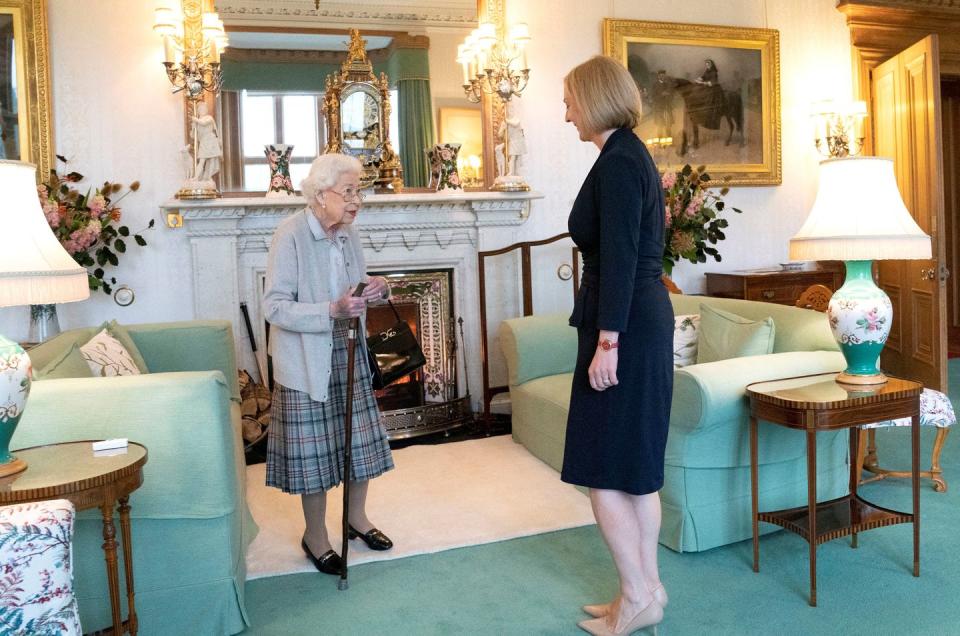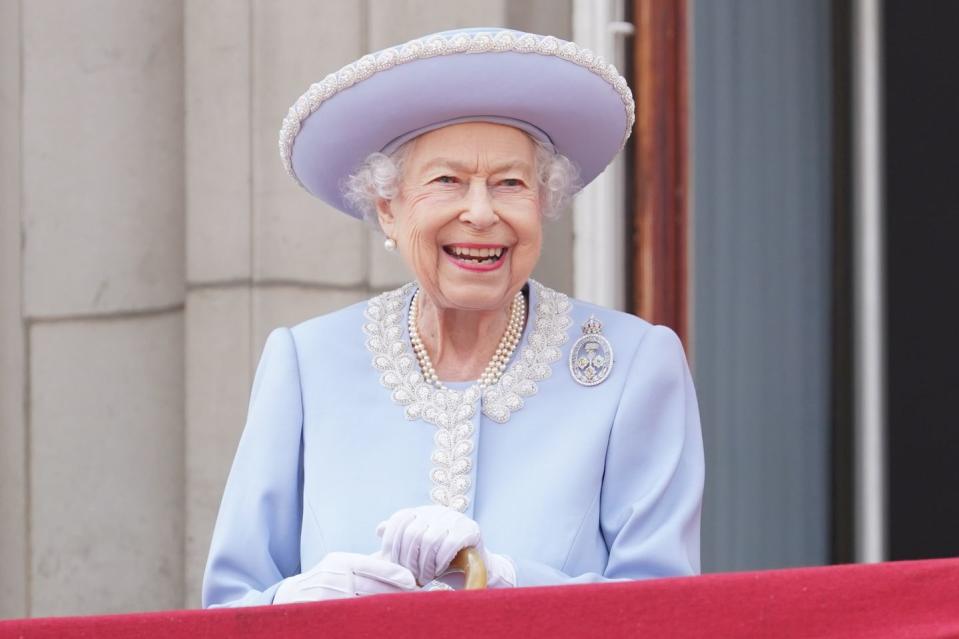Queen Elizabeth Appoints Her 15th Prime Minister From Balmoral Castle
- Oops!Something went wrong.Please try again later.
The Queen’s first Prime Minister was Winston Churchill, who was in power when she came to the throne in 1952. And today, she appointed her 15th Prime Minister when she met with Liz Truss at Balmoral.
The 96-year-old monarch—who has been struggling with her mobility in recent months—was pictured with a stick in an image showing her shaking hands with the new Prime Minister in the castle Drawing Room. She was dressed in a tartan skirt and cream cardigan and had her trademark Launer handbag on her arm.

Prior to meeting Liz Truss, the Queen had a private audience with outgoing Prime Minister Boris Johnson, who resigned from his position in July following a revolt from members of his party. The meetings are part of a well-rehearsed sequence of events which see the Queen fulfill her constitutional role of appointing a new Prime Minister.
"The Right Honourable Boris Johnson MP had an Audience of The Queen this morning and tendered his resignation as Prime Minister and First Lord of the Treasury, which Her Majesty was graciously pleased to accept," Buckingham Palace announced just after midday. An hour later, they released another message saying, "The Queen received in Audience The Right Honourable Elizabeth Truss MP today and requested her to form a new Administration. Ms Truss accepted Her Majesty's offer and kissed hands upon her appointment as Prime Minister and First Lord of the Treasury."
Buckingham Palace announced last week that the Queen would make the appointment from her Scottish retreat Balmoral, where she spends the summer, rather than the usual location of her official London residence Buckingham Palace. Aides briefed that the decision was taken to provide certainty for the Prime Minister’s diary. If the meeting had been planned for London or Windsor and the Queen had experienced mobility issues and been unable to travel then alternative arrangements would have to be made at the last-minute.

The decision follows the Queen having significantly modified her diary over the past few months, pulling out of several staple events in her annual calendar that she would usually attend. She did not appear at Remembrance Sunday commemorations last November, Prince Charles stood in for her at the State Opening of Parliament in May for the first time, and she was unable to attend most of the events for her Platinum Jubilee celebrations in June.
Queen Elizabeth has, however, indicated that she is determined to continue in her role, releasing an image in February to mark her 70 years on the throne showing her with one of her famous red boxes of government papers. She also released a message following her Platinum Jubilee celebrations, saying, “I remain committed to serving you to the best of my ability, supported by my family.”
Liz Truss became the new British Prime Minister after being elected as Conservative Party leader in a ballot in which approximately 200,000 Conservative Party members voted. She was announced as the new leader of her party on September 5 and her time as Prime Minister officially started today when she met the Queen. It is the British monarch’s constitutional role to meet with an appoint a Prime Minister, inviting them to form a government in her name. This most often happens following a general election but, as in this case, can happen when a party who has the most seats in the House of Commons chooses a new leader between elections.
The Queen does not vote in any elections and is politically neutral. Her role within government is purely ceremonial.
You Might Also Like

